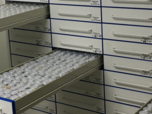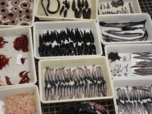Observation
The unit has been involved for forty years in long-term observations of chemical contamination. Monitoring is carried out in so-called integrating matrices, bivalves (yearly) and sediments (every 6-years) (ROCCh). This monitoring includes historical contaminants but also contaminants of emerging interest (Veille POP, Emergent’Sea). The samples acquired within the framework of the ROCCH are organized into a sample bank, in which we can carry out retrospective analyses.
Since 2014, two new contamination monitorings have been implemented to meet the MSFD requirement. The Unit has participated in the implementation of contamination monitoring in fish and cephalopods (CoRePh). These individuals are collected during fishery campaigns and their analyses are mutualized with other MSFD descriptors (D1 biodiversity, D4 food webs, D9 foodstuffs). This monitoring is complementary to historical monitorings by observing chemical contamination further offshore on the continental shelf and at different trophic levels. Since 2016, the unit has also implemented a monitoring of the biological effects induced by chemical contamination (SELI). Biomarkers of genotoxicity, neurotoxicity, reprotoxicity, cytotoxicity and general state of health are evaluated in flatfish and mussels collected near several French rivers.
All the data acquired in the observatory / monitoring is valuable to understand marine chemical contamination and its spatio-temporal variations on the French coasts. These data are also useful for environmental assessments carried out in different frameworks (regional seas conventions: OSPAR and MEDPOL, WFD, MSFD).






